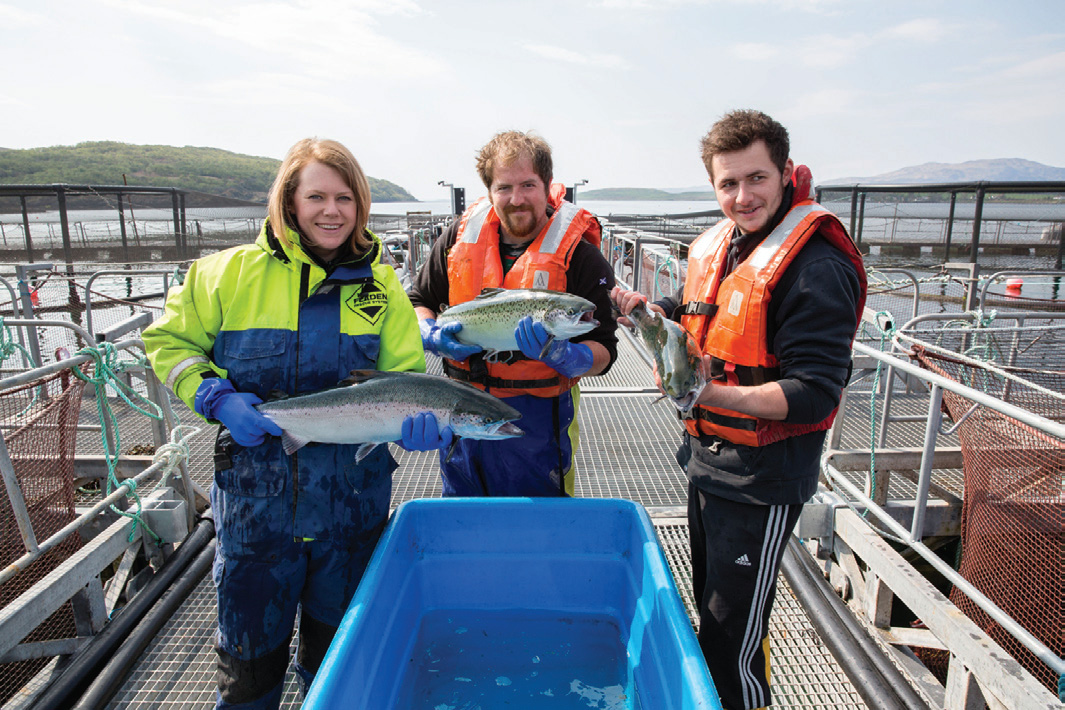
EWOS: Leading Innovation for Sustainable Aquaculture
Scaling up
As the global demand for farmed fish rises, EWOS continues its committed approach to driving innovation forward in order to improve fish health and sustainability in the seafood industry
Beginning life as a trading company of nutrients to the Swedish agricultural industry in 1931, EWOS (Group) has grown steadily through new market entry to become the leading global producer of feed to the aquaculture sector. Predominantly serving the fledgling salmon farming industry, the company operates from seven sites in five countries and has established a reputation in the market for innovation. As global demand increases for aquaculture and fish feed, EWOS continues its driven commitment to delivering high quality and innovative solutions to help improve and bolster the health and growth of fish stocks.
Based in Chile, Canada, Scotland, Norway and Vietnam, EWOS is well placed to serve the world’s biggest aquaculture markets, making the most of robust infrastructure networks already in place. “Fish feed is a volume product, which needs to have proximity to the customers and the market because distribution contributes a big proportion of the feed’s cost in all markets,” explains CEO, Einar Wathne. Across these sites the company has a total of 22 fish feed production lines, mostly for salmon but also for other white fish needs. Einar outlines the general process: “We use the same basic technology called ‘extrusion technology’ to make the feed, which allows us to make very clean pellets with no dust. We can also regulate the sinking speed so that the fish can eat everything and we minimise wastage. The process gives us good flexibility with what ingredients and composition we would like to achieve in the feeds. For instance, we develop very targeted solutions for each individual fish species and for each stage in the fish life. We call this the life cycle approach to nutrition.”
This responsible approach to delivering high quality and sustainable solutions is inherent throughout EWOS’ operations, and its ‘Innovation’ division most aptly highlights this. “Our R&D division focuses on the continuous improvement of feed in terms of the main properties we are looking for,” highlights Einar. “These are to have the most efficient feed, to get the fish to grow as fast as possible and to provide a healthy and robust fish that can survive diseases and parasites. We also do a lot of testing with alternative ingredients from which we can make feed to sustain a long-term supply without suppressing natural resources.”
In February 2015 EWOS began construction of its new Fish Health Centre in Puerto Montt, Chile. Due to be completed at the start of 2016 the new innovation facility is the biggest investment into research and development made by a private operator in the aqua industry at NOK 80 million (USD 9.5 million). “What is special about this centre is that it will enable us to work with the health of the fish in a very systematic way,” says Einar. “We know that good nutrition and certain functional components, which are all non-medicinal, can strengthen the health of the fish. We call these preventative and sustainable solutions. They are completely natural solutions with no contamination from medication or chemical, it purely strengthens the natural defence of the fish.” Tested under controlled and contained conditions, EWOS hopes to deliver strong results to the industry from the site within two to three years of opening, with a major focus on reducing sea lice effects and other marine diseases. Astonishingly the new facility not only increases the company’s research capacity by four to five times, but also increases the global research capacity by 30 per cent.
One particular area of investigation that will be expanded by the new site is the company’s research into reducing the harmful effects of sea lice in the salmon industry. “Sea lice is naturally present in the marine environment and thus on wild salmon. When you start farming, you have a higher concentration of fish and this increases the potential for parasites to attach,” explains Einar. “We have added some masking components to the feed that produce a different odour of the salmon so that we cheat the lice and it passes by the salmon. We call this the ‘anti-attachment solution’ and it has shown to be very effective reducing sea lice attachment by 30-50 per cent. In addition to this we have developed the feed to improve the fishes own immune system to enable the fish to better fight the parasites with its own defence system.” Another important research area is into raw material availability and sustainability, by looking at novel feed ingredients like algae oil or ensure that no trimmings from the fillet industry are wasted, in order to sustain growth and minimise the environmental impact.
On the journey to achieving its vision of ‘seafood for generations’, EWOS leads the way in delivering a healthy and sustainable future for the seafood industry and currently has its sights set on applying its expertise to the shrimp-farming sector. As for the next 12 months, Einar outlines a major strategic reshuffle to help direct the business towards this vision: “We have an extensive improvement programme in place for the way we execute our own business, which goes through the entire business including how and where we source our raw materials, how we manage logistics, how we run our factories, how we operate commercially and how we execute our R&D. We think it is extremely important with our knowledge we contribute to the wider understanding in the seafood industry. We have a lot of good messengers in place to convey that in order to provide for and support the growth in seafood consumption around the world.”